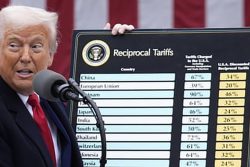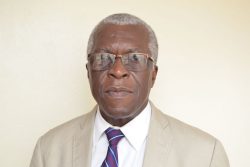A framework agreement for the Amaila Falls hydropower project was signed in Shanghai, China yesterday, with President Bharrat Jagdeo in attendance.
The agreement formalizes the cooperation between the Guyana Power and Light Incorporated, Sithe Global Amaila Holdings Limited, the China Development Bank, and the China Railway First Group Company Limited. “It sets out the parties’ intention to reach financial closure on the Amaila Falls project within 12 months or ideally sooner”, Minister of Finance, Dr. Ashni Singh told the National Assembly yesterday, saying also that it was a “historic moment.” President Jagdeo is in China as part of a Caricom delegation.
“The Amaila Falls project is the biggest infrastructure investment in our country’s history. From the start of it operations, it will provide value to Guyanese citizens and the wider economy through cheaper electricity, while simultaneously enabling Guyana to switch from nearly 100% dependence on fossil fuel sources for electricity generation to nearly 100% clean, renewable energy sources”, the Minister said.
He pointed out that 20 years after it begins operation, the hydro-plant will be transferred to the people of Guyana at zero additional cost, thereby “bequeathing long-term independence, national competitiveness and environmental sustainability to our children and future generations”. Singh said that the project will involve utilizing less than 0.001% of the State Forest area. “The government is firmly committed to ensuring that the project complies with both national and international social and environmental safeguards”, said the Minister.
Singh was, at the time updating the National Assembly on the establishment of the Guyana REDD+ Investment Fund (GRIF) and the progress on the Low Carbon Development Strategy (LCDS) and he said that in 2010 and 2011, between US$40M and US$60M will be invested as equity in the Amaila Falls hydropower project.
He recalled that on Tuesday, Jagdeo and Norway’s Prime Minister, Jens Stoltenberg announced that the GRIF will be operational within the coming month. He said that Guyana wants to see a legally binding treaty agreed under the United Nations Framework Convention on Climate Change (UNFCCC) as soon as possible but pending the agreement of such a treaty, the government supports a number of interim measures. The minister pointed out that Guyana has endorsed the Copenhagen Accord, supports the Interim REDD+ Partnership and there is the Norway agreement.
Norway intends to pay US$250M by 2015 for Guyana’s forest climate services. Brazil’s Amazon Fund –atUS$1B by 2015 – is larger, Singh said. “However, relative to the size of the forest covered by the agreement, the Guyana-Norway agreement is by far the world’s most valuable agreement of its kind”.
Singh said that the GRIF will support the implementation of priority LCDS investments from 2010 to 2015, unless it is superseded by an agreed UNFCCC or other international mechanism. The GRIF will be established to meet two objectives.
First, it will be the fund management vehicle through which payments provided to Guyana for forest climate services will generate further investment income for Guyana, pending use of the liquid assets for specific LCDS investments. The Guyanese and Norwegian governments have asked the World Bank to act as a Trustee of the GRIF, utilizing the Bank’s Treasury function to generate further investment income for the LCDS.
The GRIF’s second objective will be to act as the financial intermediary mechanism through which the payments and any income earned on them will be invested in projects and activities that support the implementation of the LCDS. Singh said that this presented a core challenge as they needed to ensure Guyanese sovereignty over LCDS decisions and specifically to make those decisions within the framework of national systems, including budgetary oversight by the National Assembly. To develop a globally replicable model and therefore help to advance UNFCCC negotiations, the Norwegian and Guyanese governments will invite a series of internationally reputable institutions to act as GRIF partner entities, Singh said. These entities include the Inter-American Development Bank, the World Bank, Conservation International, the World Wildlife Fund and “all members of the United Nations family”. Others will be determined over time.
The other priority LCDS investments include accelerating the creation of new opportunities for Amerindians; further the work to enable access to high quality ICT infrastructure in all parts of Guyana and support the creation of new low carbon opportunities for small and micro enterprise sectors and vulnerable groups.
The two other priorities are to enable a suite of investments in the education sector and; to support the Office of Climate Change, the Low Carbon Management Unit Office, the Environmental Protection Agency, and the REDD Secretariat at the Guyana Forestry Commission.
Individual government agencies are moving to translate the outlines into detailed project plans, Singh said.









